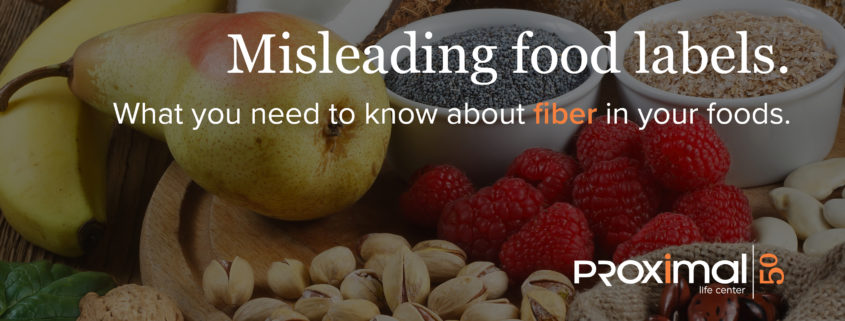Fiber: What You Need to Know
In an effort to make popular packaged foods healthier, manufacturers began adding beneficial nutrients to help improve the nutrition profile of commonly consumed foods. Fiber is common added nutrient and manufactures will often heavily market the product as being high in fiber. (think fiber-added yogurt)
However, there is concern that these isolated and sometimes synthetic added fibers don’t provide the same nutritional benefit as fiber found in whole plant sources. The FDA has now come out with a new definition of Fiber. To be listed as fiber, the ingredient must have effects that are beneficial to human health.
The food industry has asked the FDA for a 3 year delay to update food labels to the new compliance standards. Until then, be aware of these commonly used isolated and synthetic non-digestible carbohydrates that don’t meet the new fiber definition:
Alginate
Apple fiber
Bamboo fiber
Carboxymethylcellulose
Corn Hull fiber
Cottonseed fiber
Galactooligosaccharides
Gum Acacia
Insulin/oligofructose/synthetic short-chain fructooligosacchrides
Karaya gum
Oat Hull Fiber
Pea Fiber
Polydextrose
Potato fiber
Pullulan
Rice Bran fiber
High-amylose corn/maize starch
Retrograded corn starch
Resistant wheat and maize starch
Soluble corn fiber
Soy fiber
Sugar beet fiber
Sugar cane fiber
Wheat fiber
Xanthan gum
Xylooligosaccharides
Strive to get different types of fibers for various benefits and to help meet recommended amounts by eating whole plant foods such as whole grains, pulses (beans, lentils, peas), vegetables, fruits, nuts and seeds.
Vanessa Lennick
Registered Dietitian
Proximal50 Life Center


